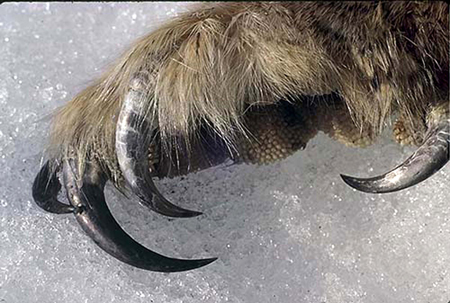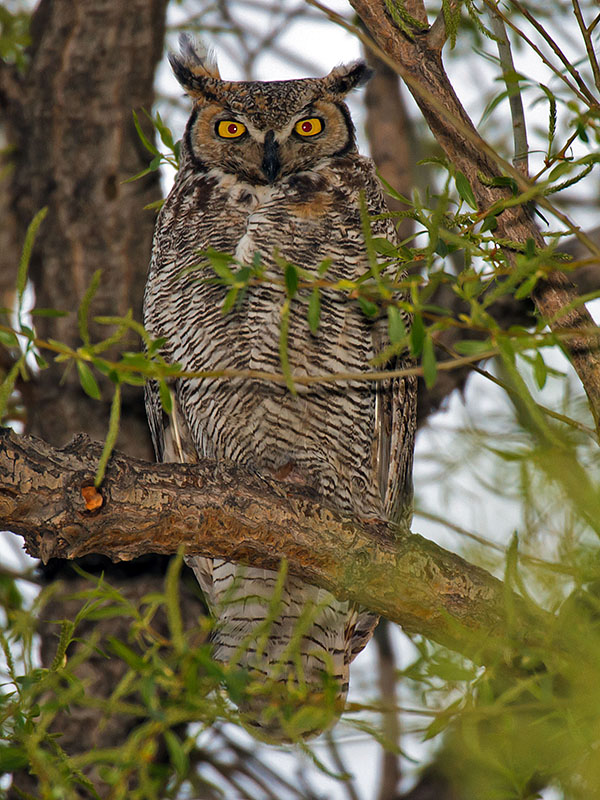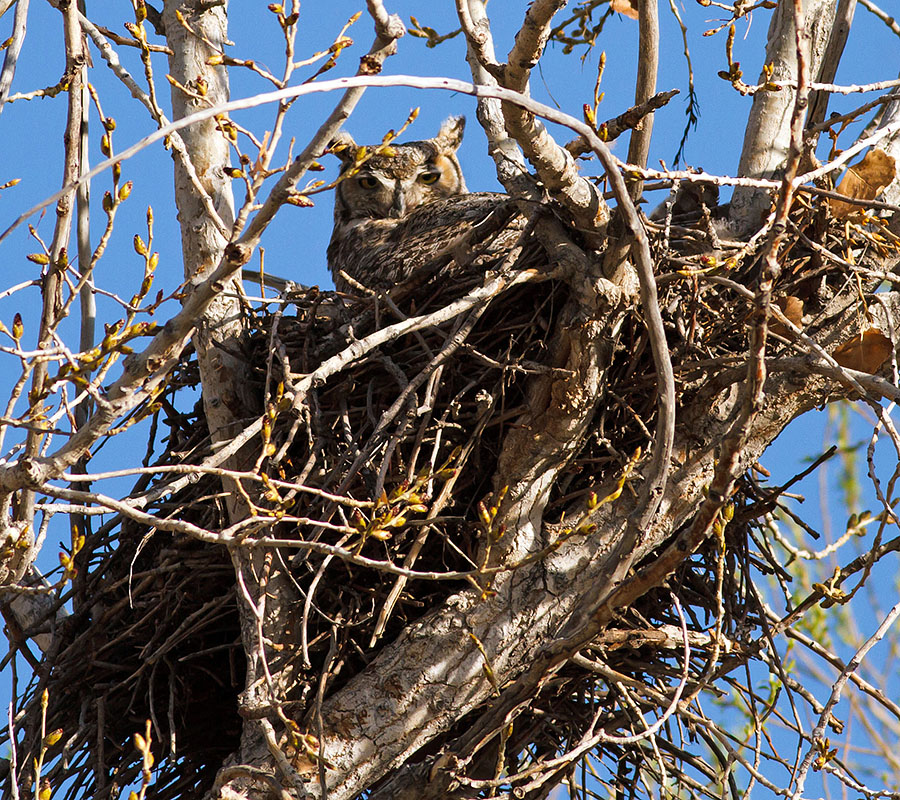Growing up, I never saw a single owl in the wild. I saw maybe one in a zoo. When I was in college walking through campus, my housemate who was knowledgeable about such things grabbed my arm, pointed at some big bird flying overhead and said, "Do you know what that is?! That's a snowy owl! Do you know how rare those things are?" I didn't. I also didn't really get a very good look at it.
Then about five years ago, I saw an owl. For real. It was a little one with yellow eyes, standing in the middle of a busy road across from a high school. Some kids were trying to shoo it out of the road with their skateboards so that it wouldn't get hit by a car, but boy, that owl looked MAD. I was in my car waiting to turn onto that road, and at one point, the owl swiveled its head and aimed its bright yellow super-angry eyes right at me. Whoo, that was intense.
Since then, I've seen four other owls, two of them in the past week.

Some people are freaked out by owls. I happen to think they're really cool.
(Photo from Just Bird)
- Worldwide, there are 215 species of owls. Only 19 live in North America. (There are 2 others but they've each been seen only twice ever.)
- Michigan and Ohio are tied for the highest number of owl species: 12.

Believe it or not, there is an owl in this picture. It's a barred owl, and you can see it blurrily in the distance. This picture was taken in mid March when the buds are just barely beginning to show. It was late afternoon, and I remember being surprised to see an owl in the daytime.
(Photo by the Apple Lady)
- Owls can't really rotate their heads 360 degrees. They can turn them 270 degrees, though, which is pretty dang far. They can do this courtesy of their 14 neck vertebrae. Humans, by comparison, have only 7.
- The visible "ear tufts" don't actually have much to do with hearing. Owls' ears are actually located underneath their feathers on either side of the head, just below the eyes.
- The fact that their ears are under their feathers does not impair their hearing. On the contrary, their hearing is superb. Some owls can hear sounds so tiny and distant, they can detect prey moving beneath the snow.

What an owl's actual ear looks like. In this photo of this Northern Saw-whet Owl, you can see the black beak of the owl and, in the shadow of her middle finger, where the eye is. That will help you get a sense of where on the owl's head the ear is located.
(Photo from ohio birds and biodiversity)

The other weird thing about owl ears is that they're asymmetrical. The ear on one side is higher than the other. Since the sound arrives at each ear at slightly different times, the owl is able to pinpoint the source of the sound much more accurately.
(Diagram from Tucson Citizen)
- As you may recall from the entry about birds in the rain, the way a lot of branch-perching birds' feet work is that their toe and leg muscles are at rest in the branch-clutching position. The same is true for owl feet.
- Their toes, equipped with very large and sturdy talons, are at rest in a clutching position, which makes it much easier for them to latch onto and pick up prey. Where we would have to clench our hands very hard to hang onto a small animal, owls really aren't clenching that hard at all. That's simply what their feet do when they're resting.

Talons of a Great Horned Owl. They have three forward-facing "toes" and one back-facing toe, kind of like a thumb, which together make a very effective claw. The feathers hanging down over the toes help the owl "feel" the prey as they get close.
(Photo from Jim Williams at the StarTribune)
(There's an even more impressive photo of talons in the Owls of Ohio PDF)
- Owls' eyes are relatively enormous. In some species, they represent 5% of the bird's total mass. The fact that their eyes are so large is one of the reasons they're able to see so well at night. Think: if you want to take a photo in low light, you have to open the aperture very wide. An owl's eyes are like very wide-open apertures.
- Owls do most of their hunting at night, but not always. They may also hunt at dawn or at dusk. Snowy owls, who live so far north there are days when it doesn't get dark, hunt during the day.
- People often say that owls fly soundlessly or silently. The last two owls I've seen, both in flight, weren't perfectly soundless, but they were pretty close. It's a little disturbing to see a bird that huge take off from a branch and fly through close leaves and branches and make barely a sound.
- The reason owls are so quiet in flight is because of the way their feathers are made. The leading edge of their primary flight feathers have comb-like or fringe-like extensions called "flutings" or "fimbriae." The flutings break the air turbulence that rushes over the wing into smaller groups which effectively shifts the sound of the wing beats to a higher frequency that is harder for most animals to hear. See a close-up of the comb edge of an owl feather here.
- Owls also don't weigh very much for their size. This means they don't have to flap their wings as much as other large birds would, which also keeps their flight quieter.
- It's not that hard to hear owls call, on the other hand, if you know where and when to listen. Find someplace rural, free of other ambient noises. Go on a windless evening. Your chances will be best in early winter through spring, which is when owls are nesting and most likely to call to each other.
- Female owls have higher-pitched voices than male owls. If you hear two owls calling back and forth, the higher-pitched is a female, the lower-pitched is a male.
- Since many owls commandeer the nests of other birds, most other birds don't like owls. If you see a bunch of crows "mobbing" something and all of them are cawing and going after something, it may be an owl in the center of the mob that they're trying to chase off. Smaller birds like chickadees and nuthatches will do the same thing.
Some Common Species of Owls
Barn owls

Barn owls with their apple-peel faces, maybe getting their polygamy on
(Photo from Just Bird)
- Their faces look to me like peeled apples.
- Other people say they are "monkey-faced" or have a "heart-shaped face"
- No ear tufts
- Almost entirely nocturnal
- They eat mice and voles
- They like grasslands, marshes, and meadows, areas which are often converted into farmland
- They do like to nest in barns
- Barn owls are polygamous
Barred owls

This is a barred owl in early May. I was surprised to see an owl out and about during the day time, but apparently this is not so uncommon. This owl sat and stared at me while I took picture after picture. I took about 10 pictures, and this owl kept an eagle eye (har har) the entire time. But it didn't fly away.
(Photo by the Apple Lady)
- Named for the variegated-colored feathers across their chests which look like bars
- Are the only other species besides barn owls that have dark eyes
- Like to live in forests near ravines or swamplands
- They like to eat mice and voles but also occasionally amphibians or fish
- They're very vocal, especially shortly after nightfall
- Their most recognizable call sounds like who cooks for you

Here's a better picture of a barred owl. You can really see the bars, or variegations in color.
(Photo from Birds242)
Screech owls

Eastern screech owl
(Photo by Angela Bartels at the San Antonio Audubon Society)
- Generally smaller with prominent ear tufts
- Eyes have large yellow irises with dark pupils
- Eastern variety lives in the US as far west as the Rockies
- West of the Rockies, they're the Western Screech Owl
- Whiskered Screech Owls live in Central America, Arizona, and New Mexico
- They may be gray, red, or brown
- They like to live in areas with scattered trees, a mix of open woods and fields, and nearby streams
- They eat all kinds of things -- other small birds, amphibians, bugs, crayfish, minnows, even catfish
- They don't actually screech; vocalizations are more like whistles
Great Horned Owl

Female Great Horned Owl. A guy named Alek took all sorts of pictures of the Great Horned Owls who built a nest near their house.
(Photo by Alek Komarnitsky)
- One of the largest species of owl
- Weighs about 3 pounds, but 22 inches long and with a wingspan of 44 inches
- Prominent ear tufts
- Females are larger than males
- Because they're so large, they can capture rather large animals.
- Mostly they eat rabbits, but they also eat muskrats, woodchucks, rats, ducks, pheasants, reptiles, and occasionally they will capture house cats.
- They are one of the few predators that will eat skunks
- If you smell a strong skunk odor and it seems to be coming from the air, if you follow the scent, it will probably lead you to a Great Horned Owl's nest in a tree where it has taken its dinner.
- They like to nest in large cemeteries, especially near the top of large conifer trees. They also like tall trees cottonwoods or sycamores alongside streams or marshes.

One way to spot a Great Horned Owl nest is to look for the ear tufts sticking up
(Photo by Alek Komarnitsky)
Snowy Owl

Snowy owl, looking regal, its black markings visible
(Photo by Richard Jackson, at Paul Asimow's snowy owl page)
- Made famous by Harry Potter's Hedwig
- Snowy owls are about the same size as Great Horned Owls, though females are even larger
- White with a few black markings
- Young snowy owls can be almost all black though their faces will be all white
- No ear tufts
- As you might expect, they're most commonly seen in the winter
- They like rocky walls next to big, open landscapes
- Large groups of snowy owls have been spotted near airports or harbors
- Their favorite food is lemmings. They'll also eat ducks, seagulls, rats, or voles

Here's a snowy owl in flight. Those legs are huge!
(Photo from Animal Wildlife)
In many cultures, owls symbolize wisdom. In Greek mythology, Athena, the goddess of wisdom, was so impressed by the owl's large eyes and solemn appearance, she chose the owl as her favorite. (The fact that owls lived in the Acropolis in huge numbers probably had something to do with it, too.) More recently, people connect the owls' nocturnal behavior with the scholars' late-night studiousness.

Athena was rarely depicted with an owl, but here is a (later) bronze statue of Athena and her owl. Athena might be my favorite of the Greek goddesses. She was bad-ass.
(Photo from GoddessGift.net)
Sources
Ohio Department of Natural Resources, Division of Wildlife, Owls of Ohio
West Virginia University Cooperative Extension, Night Birds -- Owls
Deane Lewis, The Owl Pages, Owl Feathers and Flight, Owls in Mythology and Culture
Tucson Citizen, Western Screech Owl, a feisty little raptor, September 24, 2010
No comments:
Post a Comment
If you're a spammer, there's no point posting a comment. It will automatically get filtered out or deleted. Comments from real people, however, are always very welcome!